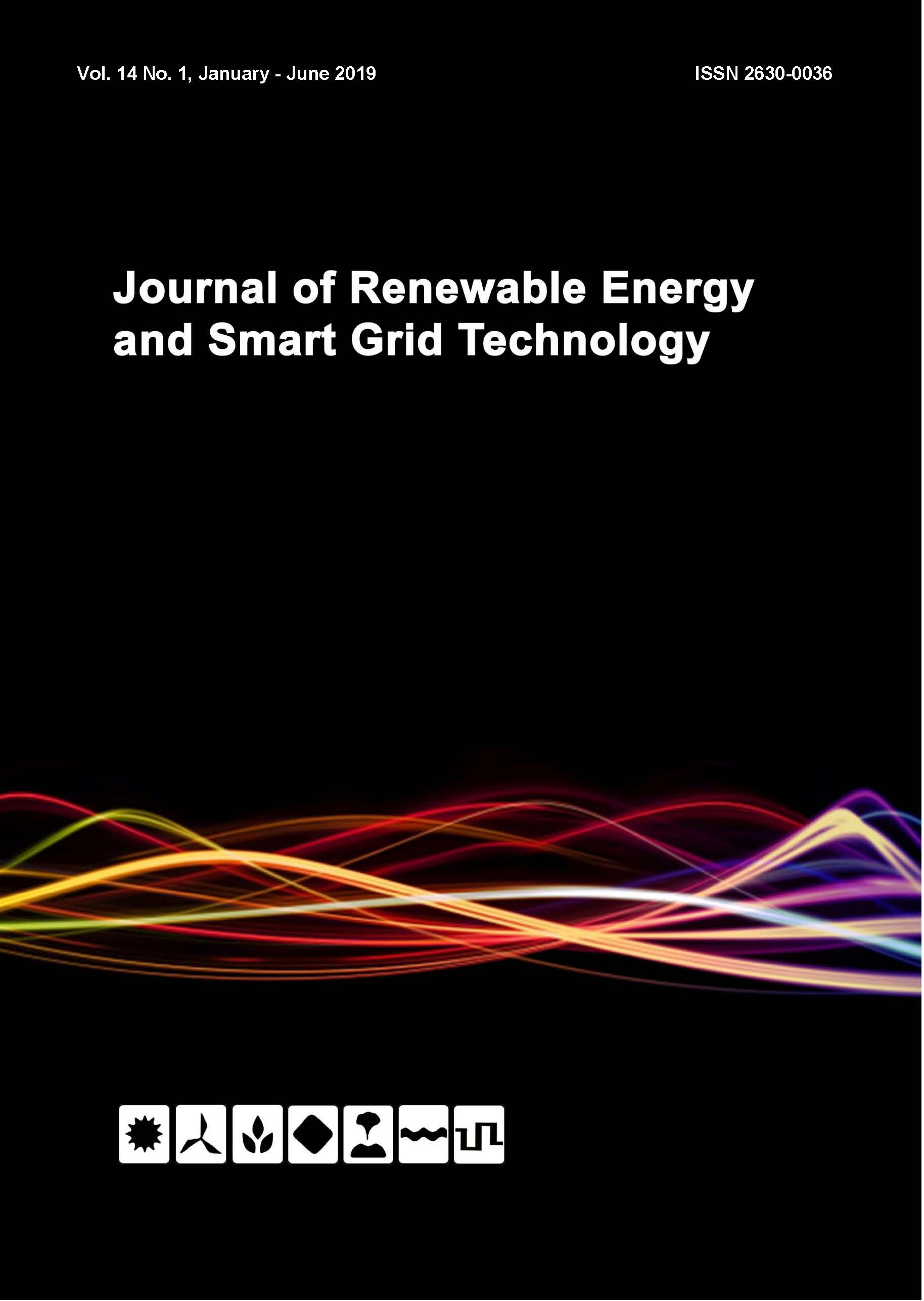Techno-Financial assessment of Dust Impact on 8 MW PV Power Plant in Thailand
Keywords:
Dust, Solar Spectrum, PhotovoltaicAbstract
This paper is an e analysis of how dust decreases the electrical power output from photovoltaic (PV) modules by altering the solar spectrum and thereby obstructing the absorbance of solar irradiance by the PV modules. The research were done for 300W polycrystalline silicon modules installed for a 8 MW PV power plant in Phichit province. The output of a clean module surface with that of a dusty surface was compared by calculating the solar irradiance in the measured wavelength range of 350-1,050 nm of spectral irradiance. The income or revenue difference of the PV power plant, with clean and dusty PV moduel surface were analyzed. The findings revealed that accumulated dust affects solar irradiance transmission by 4.02%, causing a decrease of irradiance in the wavelength range of 380-760 nm (visible light). In the high irradiance effect of the dust will be reduced. At a solar irradiance higher than 600 W/m2, the effect of dust will be in wavelengths 350-550 nm. However, in the case of solar irradiance lower than 600 W/m2, the effect of dust will be in wavelengths 350-800 nm. Dust accumulation causes power output degradation of a PV module by reducing the solar irradiance and the transmittance. Power output degradation is linear with the dust accumulated density. The dust accumulation reduces PV power output, after 30 days by 2.8% and after 60 days by 6.2%. When the PV modules of the power plant are not clean for a long time, the monthly revenue from the sale of electricity is greatly reduced to a maximum of 359,000 baht. Therefore, dust accumulation should be removed or at least minimized so that PV modules operate at optimal efficiency.
References
[2] Department of Alternative Energy Development and Efficiency, (DEDE). (2019). The Renewable and Alternative Energy Development Plan for 30 Percent in 10 Years (AEDP 2015-2036). Retrieved fromhttps://www.dede.go.th/dede/images/stories/dede_aedp_2015_2036.pdf
[3] Department of Alternative Energy Development and Efficiency, (DEDE). (2019). Thailand Alternative Energy Situation 2017. Retrieved from https://www.dede.go.th/download/state
_58/sit_57_58/Thailand%20Alternative%20Energy%20Situation.pdf
[4] Sirisamphanwong, C., Ketjoy, N., Rakwichain, W., & Vaivudh, S. (2011). Average photon energy under Thailand’s climatic condition. International Journal of Renewable Energy, 6(1), 25-29.
[5] Elias, U., Javier, A., Paulo, A., Marcelo, S., Gonzalo, R., Cristian, C., Alan, P., & Rodrigo, E. (2016). Effect of soiling and sunlight exposure on the performance ratio of photovoltaic technologies in Santiago, Chile. Energy Conversion and Management, 114, 338–347.
[6] John, J.J., Warade, S., Tamizhmani, G., & Kottantharayil, A. (2016). Study of Soiling Loss on Photovoltaic Modules With Artificially Deposited Dust of Different Gravimetric Densities and Compositions Collected From Different Locations in India. IEEE Journal of Photovoltaics, 6(1), 236-243.
[7] Photovoltaic Systems. (1995). Fraunhofer Institute for Solar Energy Systems. Freiburg.
[8] US EPA: U.S. Environmental Protection Agency. (2018). Determination of particulate matter emissions from stationary sources. Retrieved from https://epa.gov/ttn/emc/promgate/m-05.pdf
[9] Kaldellis, J., & Kapsali, M. (2011). Simulating the dust effect on the energy performance of photovoltaic generators based on experimental measurements. Energy, 36, 5154–5161.
[10] Air quality and noise management bureau, pollution control department. (2018). Pollution control department. data archives for air and noise pollution. Retrieved from https://aqnis.pcd.go.th/en.
[11] PVsyst. V5.41. May 2011. PVsyst SA. Satigny, Switzerland.
Downloads
Published
How to Cite
Issue
Section
License
All copyrights of the above manuscript, including rights to publish in any media, are transferred to the SGtech.
The authors retain the following rights;
1. All proprietary rights other than copyright.
2. Re-use of all or part of the above manuscript in their work.
3. Reproduction of the above manuscript for author’s personal use or for company/institution use provided that
(a) prior permission of SGtech is obtained,
(b) the source and SGtech copyright notice are indicated, and
(c) the copies are not offered for sale.









